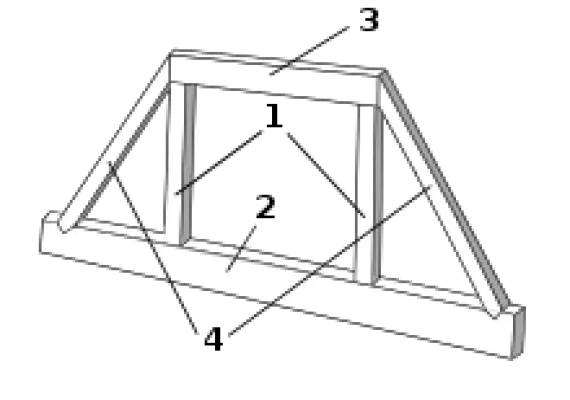What Is Moment Resisting Frame Structure?
What Is Moment Resisting Frame Structure?
A moment-resisting frame is a type of structural system that is made up of beams and columns that are rigidly connected.
The primary means of resistance to lateral forces in this type of frame is through the development of bending moments and shear forces in the frame members and joints.
Due to the rigid beam-column connections, a moment-resisting frame can only resist lateral displacement by bending the beams or columns.
The bending rigidity and strength of the frame members are therefore the key factors that provide lateral stiffness and strength to the whole frame.
As noted, the strength and stiffness of the frame members here are the primary sources of resistance to lateral forces. The joints between columns and beams are designed to be rigid, allowing the columns and beams to bend during an earthquake.
To accommodate this, the columns and beams are made strong in bending. Unlike trusses, moment-resisting frames do not have diagonal cross-bracing, so the shear forces acting on the structure must be resisted as moments at the joints between beams and columns.
This design is more flexible than a truss with diagonal bracing, but it is still used where such bracing would be impractical, such as at wall openings. These moment-resisting frames are called special moment frames due to the additional requirements that improve their ability to withstand inelastic seismic loading.
The 1994 Northridge earthquake highlighted a common issue in steel-frame construction, which was poorly welded moment connections, and building codes have been updated to address this issue.
Types of Moment Resisting Frame
When it comes to steel moment frames, there are three types defined in the building codes: ordinary moment frames (OMF), intermediate moment frames (IMF), and special moment frames (SMF).
- Ordinary Moment Frame (OMF) are typically used in regions where structures are primarily subjected to lateral forces due to wind and where seismic activity is minimal. These frames are less ductile than other types and are designed to withstand limited inelastic deformations.
- Intermediate Moment Frames (IMF) are more ductile than ordinary moment frames, but less ductile than special moment frames. These frames are typically used in areas with low to medium seismic activity and are designed to withstand moderate inelastic deformations. An IMF must sustain an inter-story drift angle of 0.02 radians.
- Special Moment Frames (SMF) are the most ductile of the three types and are used in areas with medium to high seismic activity. They are designed to withstand significant inelastic deformations and must sustain an inter-story drift angle of 0.04 radians.
Moment frames can also be classified based on the material used. Steel moment frames consist of beams and columns made of steel that are connected by bolting or welding.
The grade and type of steel used depend on the design requirements. Concrete moment frames are made of reinforced cement concrete (RCC) and consist of an assembly of RCC beams and columns that are joined together. Usually, beam-column joints made of concrete are inherently rigid unless special provisions are made.
